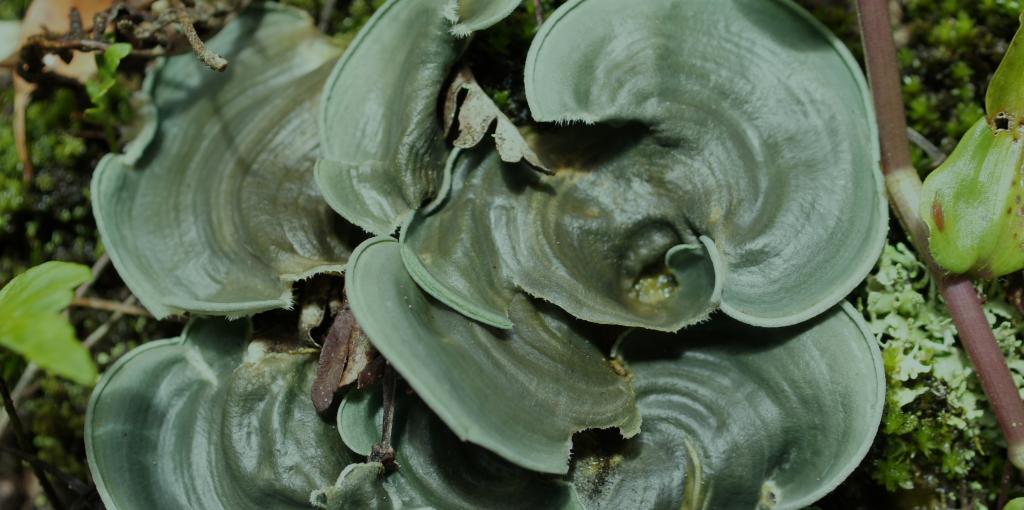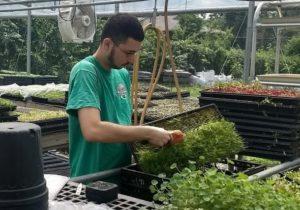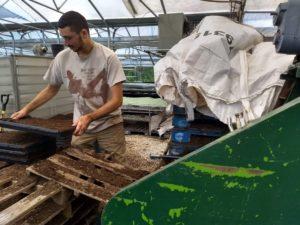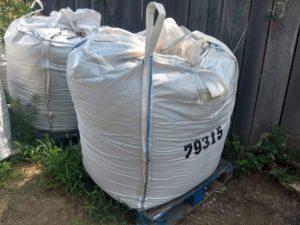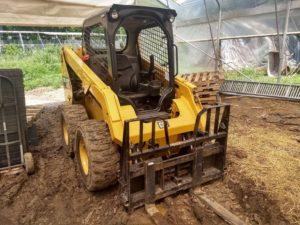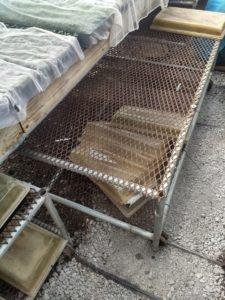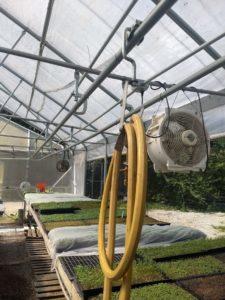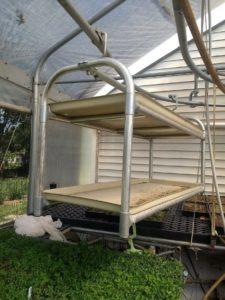Gabriel Baum
Admission CTAs
CITY BITTY FARM
Intern at City Bitty Farm in Kansas City, Missouri
Story and images by Gabriel Baum
with battery-powered grass shears.
Overview
During the summer of 2018, I was an intern at a greenhouse in Kansas City, Missouri. The greenhouse is called City Bitty Farm, and its primary crop is microgreens. The term “microgreens” refers to any type of salad green that has been harvested when only the first two leaves, the “cotyledons” have sprouted. Because the plants have just sprouted, all the nutrients required for growth are concentrated and the greens are much more nutritious than regular salad greens per ounce. This also makes them more expensive. In an average supermarket, baby spinach is on average 30 to 50 cents an ounce. Microgreens sold by City Bitty Farm range from $3 to $7 per ounce. Some chefs use microgreens lightly as a garnish because they are pretty, whereas others use them more heavily to accent flavor and add nutrition.
Interest in this Internship
I wanted to pursue this internship, despite it being unpaid and over 1,000 miles from home. I am interested in starting my own microgreen farm in the future. City Bitty Farm is remarkably successful and has a unique size. Most microgreen farms are either smaller and run by one or two people, or massive and deliver from coast to coast. This proved to be an outstanding opportunity for me to learn how a farm of this type and scale operates.
There are different options that must be considered before starting a microgreen farm. For example, microgreens can be grown in soil or hydroponically, a style of growing that requires no soil, where plants grow directly in water and are held by a structure. Also, many microgreen farmers prefer to grow indoors for consistency. There is also the decision of whether to go organic or not. City Bitty Farm is not certified organic, because it is extremely costly to maintain certified organic status. However, the farm uses completely organic practices and grows its crops in dirt in an outdoor greenhouse. Its microgreens are sold to higher-end restaurants in the area, as well as two wholesale produce distributors. They are not sold to the general public. The owner, the farm manager, and my coworkers all gave me valuable advice that I can use when it comes time for me to decide how I want to proceed with opening a farm.
Pictures below:
(L) The soil, a bag of composted manure.
(R) A skidsteer with interchangeable hydraulic implements that can be used for a variety of tasks around the farm. Its main function is to move bags of dirt.
Reasons the Farm is Successful
Despite several adversities, the farm has been growing ever since it started eight years ago. Through hard freezes, heat waves, pest problems, and heavy wind and rain, the greenhouse has held up and the business continues to expand. The owner, Greg Garbos, likes to say that the main reason this method of farming does well is simple. There are only five inputs; soil, water, seeds, sunlight, and labor. City Bitty Farm stays ahead of larger scale competitors by offering great customer service. It delivers microgreens only one or two days after harvest, and in person. The farm also produces higher quality greens than its local competitors, because it is the only microgreen farm in the area at its scale growing in soil. Its greens last on average two weeks, but sometimes can last three weeks depending on the crop. By contrast, hydroponically grown microgreens have a much shorter shelf life, 5 to 7 days at most.
Special Implementations in the Greenhouse
Greg, the owner of the farm, is also an engineer. He is the owner of another company called Four Season Tools, which designs custom greenhouses with useful features. Several of these extra features can be found in City Bitty Farm’s greenhouse, which serves as a place for new add-ons to be tested. All of these and several other designs offered by Four Season Tools were engineered by Greg himself.
Pictures below:
(L) Extra storage on a track for easy access. This allows there to be either a walkway and storage for trays being germinated (without sunlight) or no walkway and extra trays receiving sunlight.
(M) A trolley system for the hose to reduce the amount of time winding and unwinding hose.
(R) A hanging trolley that can be easily moved from one end of the greenhouse to the other.
Conclusion
I went into this internship hoping to learn as much as possible about how microgreens are grown as well as how they are marketed and sold. During my time on the farm, I was able to accomplish that goal. I got an inside look at the day to day operations of a successful microgreens farm and participated in the running of those operations. One of my favorite parts of the internship was the day I went on our delivery route. I managed to see the inside of dozens of kitchens and meet dozens of chefs. Outside of the farm, I learned a lot about Missouri wildlife and had plenty of time to explore Kansas City and the surrounding area. I will always remember my time at this farm fondly.
Back to https://science.gmu.edu/news/spotlight-evpp-494-internship
